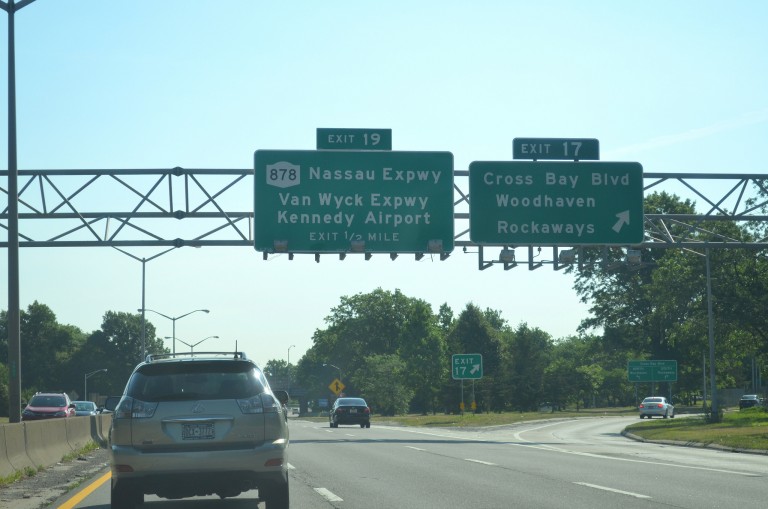PHOTO: City Comptroller Scott Stringer this week said that over the last six years the Belt Parkway has been the worst roadway in the city when it comes to pothole claims. Photo Courtesy of flickr/Ian Ligget
The Belt Parkway is the worst roadway for potholes in the city, according to a report from Comptroller Scott Stringer.
The highway system that connects Brooklyn and Queens garnered 706 claims from Fiscal Year 2010 through Fiscal Year 2015. Coming in a distant second was the Grand Central Parkway with 433, followed closely by the Brooklyn-Queens Expressway, which earned 422 total claims in during the six year period.
Queens, by far, had the highest number of pothole claims of the five boroughs—3,590—from 2010 through 2015.
The numbers are from a ClaimStat Alert released this week by Stringer, who said that with over 12,000 claims for damage to cars and trucks, nearly 6,000 personal injury claims, and close to $138 million dollars paid out in settlements over the past six years, the city’s long-running pothole problem persists.
“Potholes are serious trouble,” Stringer noted. “They deflate tires, break axles, and twist ankles, often at a significant financial cost to the city. The ClaimStat Alert we are releasing today gives the Department of Transportation a road map to identifying the trouble spots across all five boroughs so that they can do the important work of repairing roadways now, before winter weather comes storming back to make our city’s streets even worse.”
Stringer’s office’s analysis, which was handled by the bureaus of Policy and Research, and Law and Adjustment, found that from FY 2010-2015 there were 12,286 defective roadway claims, or pothole claims, for property damage, and 1,549 settlements for defective roadway claims worth a total of $1.5 million; 5,913 claims for personal injuries, mostly trip and falls, related to defective roadways, and 2,681 settlements for personal injury claims worth approximately $136.3 million; and 48 percent of those personal injury settlements were for $5,000 or less and just about 8 percent were for more than $100,000.
In addition to speeding up the time it takes to fill potholes, Stringer recommended exploring a complete reconstruction of certain streets—a tactic that initially costs more than repaving, but that could save taxpayers money in the long haul; continuing to pioneer the use of new and more durable materials such as rubberized asphalt and recycled plastic in road resurfacing; and re-evaluating DOT’s procedures to ensure that utilities properly reconstruct city streets following work that involves excavation of roadways.
“While city streets might never be completely rid of potholes, we are working with DOT to make streets safer for New Yorkers whether they’re on two wheels, four wheels, or on foot,” Stringer said. “I applaud DOT for the great work they do, and we look forward to continuing provide them with the data they need to get ahead—and stay ahead—of New York City’s pothole problem.”
Last month, the national transportation research group TRIP found that over 80 percent of the major roads and highways in the city and Newark metropolitan areas were in poor or mediocre condition—the seventh worst ranking in the nation among cities with greater than 500,000 residents. This, the report said, imposes nearly $800 in annual additional maintenance costs on car owners—what amounts to “a hidden pothole tax.”
By Forum Staff

